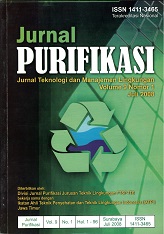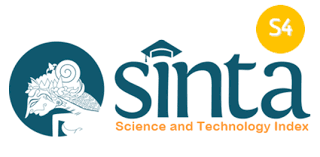A COMPARATIVE STUDY ON THE REMOVAL OF REMAZOL GOLDEN YELLOW 6 DYE BY MIXED CULTURE OF DEAD FUNGAL BIOMASS AND ACTIVATED CARBON
Main Article Content
Abstract
Remazol Golden Yellow 6 is a vinyl sulfone reactive dye with an azo-based chromophore, which produces a coloured wastewater that is difficult to treat by biological treatment. Physical adsorption of coloured wastewaters with activated carbon although effective is economically expensive. It is therefore necessary to find effective and economic alternatives for absorbant, such as microorganisms. The biosorption capacity of a mixed culture of dead fungi biomass (Aspergillus sp., Penicillium sp., and Saccharomyces sp.) for Remazol Golden Yellow 6 was examined as a function of initial pH and initial dye concentration. The results were compared to the adsorption capacity of a commercial activated carbon. Optimum initial biosorption pH was determined as 1. The percent dye removal of 0.5 g biomass with initial dye concentrations of 60 mg/l, 80 mg/l and 100 mg/l were 90.3%, 93.6% and 97.6% respectively with equilibrium established within 75, 125 and 150 minutes. In comparison, dye removal with granular activated carbon for the same dye concentrations were respectively 32.1%, 36.4% and 37.8 % with equilibrium time at 275, 400 and 475 minutes.
Downloads
Article Details
Submission of a manuscript to Jurnal Purifikasi means that the work has never been published in another journal and is not under consideration for publication elsewhere. The author hereby agrees to submit the copyright of the manuscript and its contents to Jurnal Purifikasi, if accepted for publication. Accepted manuscripts will be published in printed form where the ISSN is bound in printed form, not in online form (pdf). Authors are not allowed to publish their work in other forms (journals) without permission from the Jurnal Purifikasi manager.
By submitting a manuscript, the author is deemed to know all the rights and obligations attached to each manuscript.








